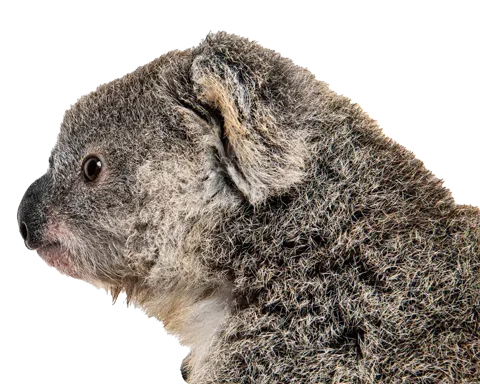
Cover – Rainbow Lorikeet cooling off (Image: Ran Fuchs #BirdArtPhotos)

New Holland Honeyeater and Silvereyes sharing a backyard birdbath (Image: Wanda Optland #PhotosbyWanda)
Wild weather conditions can affect our native birds and animals as well as destroy their habitat.
We’ve experienced a cool wet spring with record rainfall in some areas of NSW. The Bureau of Meteorology has declared a La Niña event, which is typically associated with wetter than average conditions for northern and eastern Australia.
In wet weather, native birds can become water logged, lose their nests and even be blown off course in high winds. Possums can easily get sodden in heavy rain without a protected drey, hollow or nest box. Extreme flooding events may also see wallabies and kangaroos stranded as they seek higher ground, while wombats can even drown in their burrows. Wildlife will often seek refuge on a safe verandah or end up in the strangest of places.
Currently, we are seeing turtles appear on road sides near waterways, so please slow down and drive safely – remember Aesop’s Fable about the Tortoise and the Hare? It is always best to either allow the turtle safe passage across the road or, if it is safe to do so, the turtle can be carried across to the side to which it was headed. Freshwater turtles (particularly young ones) are prone to being washed down storm water drains in rainy conditions and then popping up on beaches. They cannot tolerate salt water, so they need attention quickly.
Long-necked Turtle‘ Trevor’ post surgery for his broken shell (Image: Peter Sharp Photography)
When the hot dry summer weather eventually arrives, our wildlife will also need your help. If you’re feeling the heat, spare a thought for our native birds and animals too. They can become dehydrated and disorientated and take greater risks (such as coming out into the open or crossing roads) to access water.
You can help our wildlife during hot spells by placing containers of water both on the ground and at varying heights in shady, safe areas around your garden where they are accessible to native birds and animals, but not to domestic pets. Stick to terracotta, ceramic or plastic containers as metal containers get too hot. Also remember to clean these containers regularly as some birds might carry diseases which can transfer easily to other birds.

Sulphur-crested Cockatoo enjoying a fresh drink from a protected suburban bird bath (Image: Michael Bianchino)
Make sure the containers are sturdy and/or secured to ensure they don’t tip over if birds or animals stand on the edge to drink. Placing a twig as a ‘scamper ramp’ at the side of the bowl or rocks at the bottom of birdbaths can also prevent birds and animals from drowning. And please remember to top up and change the water regularly.
.jpg)
Willy Wagtail coming in for a cool landing (Image: Wanda Optland #PhotosbyWanda)
If you come across wildlife in distress regardless of whether it’s cold & wet or hot & dry, please call Sydney Wildlife 24/7 on 9413 4300 for advice or contact your local native animal rescue service. And remember, in extreme weather events don’t take risks, contact us and we’ll reach out to emergency services and other authorities if required as detailed in this helpful link from NSW Department of Planning, Industry and Environment:
Thank you to the wonderful photographers who contribute to our stories including Rans, Peter, Michael and Wanda who have generously shared their work with us for this article. Keep an eye on our Facebook page for more amazing pics:


